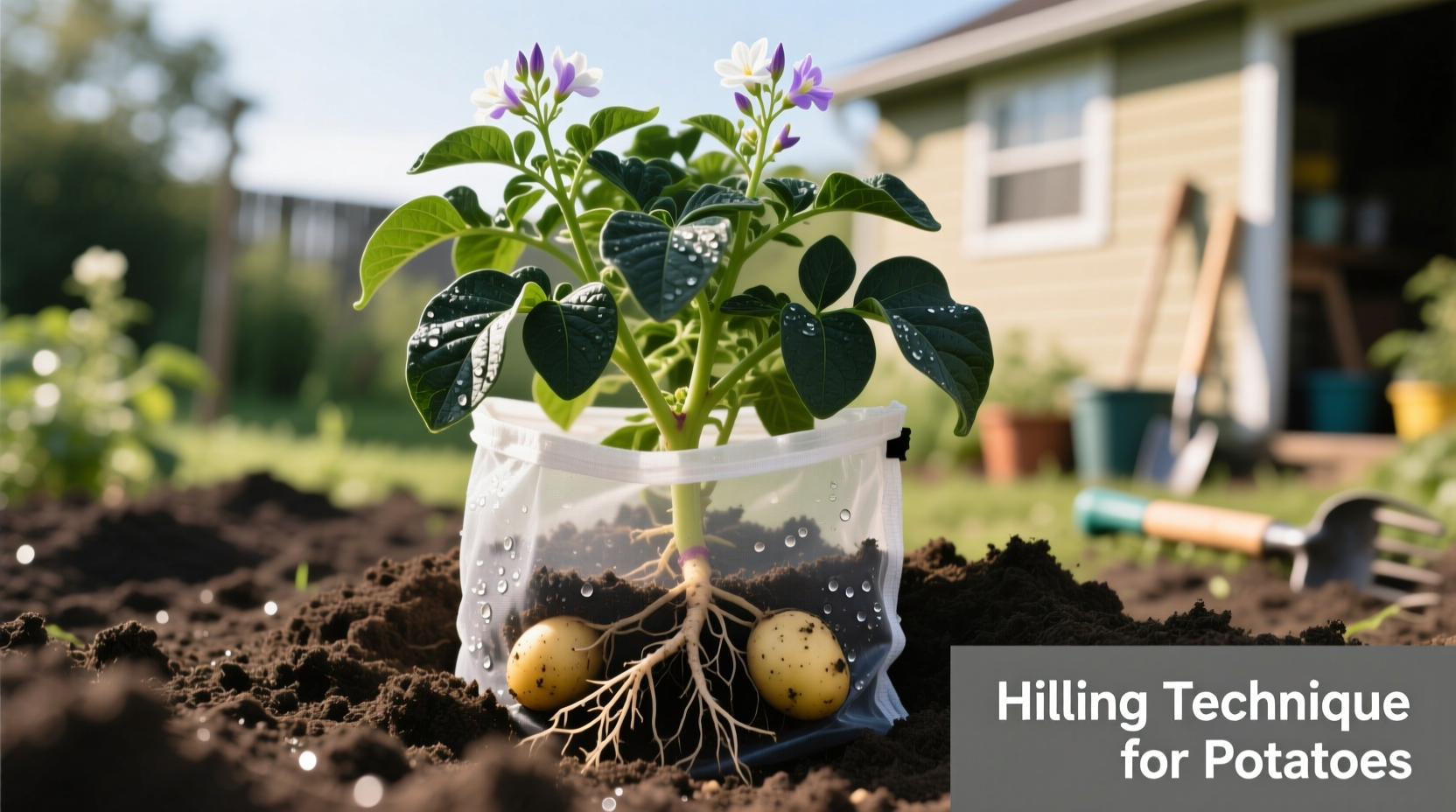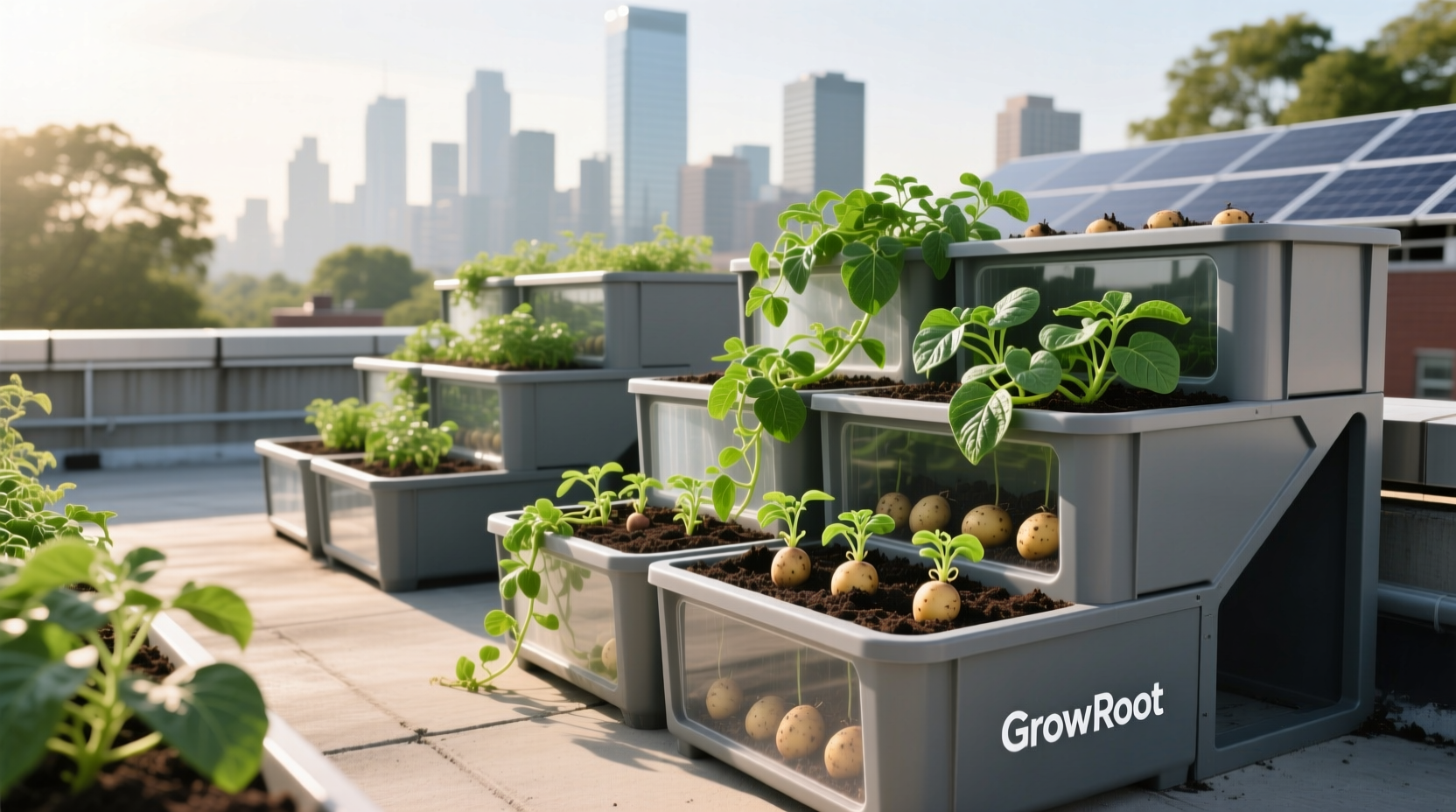Container gardening makes potato cultivation accessible for urban dwellers and small-space gardeners. Unlike traditional in-ground methods, containers offer superior soil control, easier pest management, and simplified harvest. The key to success lies in selecting appropriate containers that provide adequate depth for tuber formation while maintaining proper drainage. Research from agricultural extensions confirms that containers under 12 inches deep significantly reduce yield potential due to restricted root development.
Container Types Compared: Finding Your Ideal Growing System
Not all containers perform equally for potato cultivation. The right choice depends on your space, budget, and gardening goals. Below is a comparison of common options based on university agricultural research:
| Container Type | Capacity Range | Drainage Quality | Cost | Best For |
|---|---|---|---|---|
| Fabric grow bags | 5-15 gallons | Excellent (air pruning) | $$ | Most home growers (ideal depth-to-width ratio) |
| Plastic pots | 3-10 gallons | Good (with added holes) | $ | Budget-conscious gardeners |
| Wooden crates | 10-20 gallons | Moderate (requires modification) | $$$ | Aesthetic-focused patios |
| Repurposed containers | Varies | Poor to good (depends on modification) | Free-$ | Eco-conscious gardeners |
According to the University of Minnesota Extension, fabric grow bags consistently outperform other container types due to their air-pruning effect that prevents root circling and promotes healthier tuber development. Their breathable material also reduces the risk of waterlogging—a common cause of potato rot in containers (extension.umn.edu).
Container Size Requirements: Avoiding Common Mistakes
Many gardeners underestimate the space potatoes need to thrive. The critical factor isn't width but depth—potatoes require vertical space for proper hilling. Cornell University research shows that containers under 12 inches deep produce 40% fewer tubers than those with 16+ inches of soil depth.
For optimal results:
- Minimum container depth: 12 inches (16 inches preferred)
- Minimum capacity: 5 gallons per plant
- Ideal width-to-depth ratio: 1:1.5 (wider containers require deeper soil)
- Maximum plant density: 1 plant per 5-7 gallon container
Container gardening becomes impractical for large-scale production. The Royal Horticultural Society notes that yields per square foot decrease significantly when growing more than 3-4 plants in containers due to competition for nutrients (rhs.org.uk).
Essential Drainage Modifications for Success
Proper drainage separates successful potato containers from failed attempts. Potatoes tolerate drought better than waterlogged conditions, which cause rapid tuber rot. Follow these drainage guidelines:
- Drill 6-8 quarter-inch holes evenly spaced across the bottom
- Add 1-2 inches of gravel or broken pottery at the base
- Elevate containers 1-2 inches using pot feet or bricks
- Avoid containers with only central drainage (creates wet spots)
California agricultural researchers found that containers with modified drainage systems reduced tuber rot by 73% compared to standard pots (ucanr.edu).
Step-by-Step Planting Process for Maximum Yield
Follow this planting sequence for optimal container potato production:
- Prepare container: Add drainage layer and fill with 4 inches of quality potting mix
- Plant seed potatoes: Place 2-3 chitted seed potatoes (cut side down) on soil surface
- Cover: Add 3 inches of soil mix over seed potatoes
- Initial growth: Water thoroughly and place in full sun
- Hilling: When stems reach 6 inches, add soil mix to cover all but top leaves
- Repeat hilling: Continue every 2 weeks until container is full
This hilling technique mimics traditional field growing methods and encourages additional tuber formation along the stem. Unlike garden beds, container hilling requires more frequent attention as soil settles faster in confined spaces.

Troubleshooting Common Container Growing Issues
Container potatoes face unique challenges. Address these problems promptly:
- Yellowing leaves: Usually indicates overwatering—allow top inch of soil to dry between waterings
- Small tubers: Container too small or insufficient hilling—add more soil immediately
- Pale stems: Not enough hilling—cover exposed stems with additional soil
- Pests: Container isolation reduces pest pressure, but watch for aphids on new growth
Harvesting and Storage Tips
Container potatoes mature 70-120 days after planting, depending on variety. Harvest when:
- Foliage begins yellowing and dying back naturally
- Flowers have faded completely
- Tubers reach desired size (check by gently feeling soil)
To harvest, simply tip the container and collect potatoes by hand—no digging required. Cure harvested potatoes in a dark, humid location for 10-14 days before storage. Properly stored container-grown potatoes maintain quality comparable to field-grown counterparts.











 浙公网安备
33010002000092号
浙公网安备
33010002000092号 浙B2-20120091-4
浙B2-20120091-4